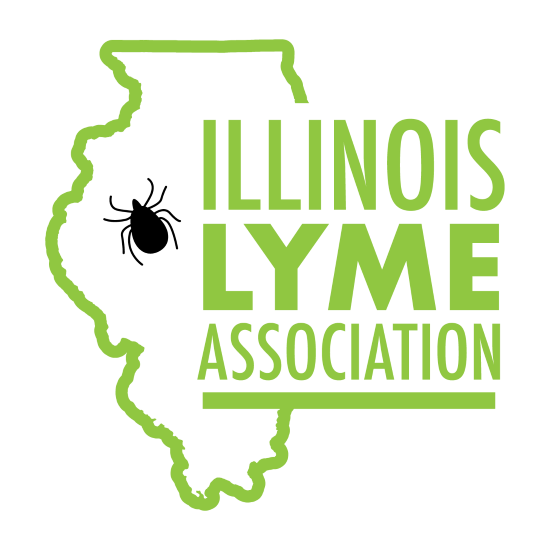Borrelia Miyamotoi: Explore a Lesser-Known Tick-Borne Threat in Illinois
By Jennifer Halpern
In the realm of tick-borne diseases, Borrelia miyamotoi is a lesser-known but emerging threat, lurking in the dense foliage of Illinois. It belongs to the same family as the Lyme disease-causing Borrelia burgdorferi. Yet, B. miyamotoi has its own unique set of challenges, from transmission to diagnosis and treatment.
What is B. Miyamotoi?
B. miyamotoi is a spiral-shaped bacterium belonging to the genus Borrelia, which includes species responsible for Lyme disease, relapsing fever, and other tick-borne illnesses. Discovered in ticks in Japan in 1995, it wasn't until 2011 that scientists identified it as a threat to humans in Russia. Infection of B. miyamotoi after a tick bite may lead to Borrelia miyamotoi disease, which The National Institute of Allergy and Infectious Diseases (NIAID) classifies as an emerging infectious disease.
Symptoms of B. Miyamotoi Disease
Many symptoms of B. miyamotoi infection overlap with Lyme disease and other tick-borne illnesses, so an accurate diagnosis is not always straightforward. One key difference is that in the case of B. miyamotoi, a rash is uncommon, with fewer than 1 in 10 patients developing one, according to the Centers for Disease Control and Prevention (CDC). Common symptoms to look out for include:
fever
chills
fatigue
muscle and joint pain
headache
nausea
Some individuals may also experience relapsing fever, with recurring episodes of fever in between symptom-free periods. Symptoms can range from mild to severe and may pose the biggest health challenge in people who are immunocompromised. Those with compromised immune systems may develop more severe symptoms, affecting cognition, gait, memory, the nervous system, and other systems of the body, according to the National Library of Medicine National Center for Biotechnology Information (NIH).
Transmission and Geographic Distribution in Illinois
B. miyamotoi has been detected in two types of North American ticks, the blacklegged or “deer” tick (Ixodes scapularis) and the Western blacklegged tick (Ixodes pacificus), the CDC states.
In Illinois, the blacklegged tick is causing real concern for residents and outdoor enthusiasts. You can find blacklegged ticks in wooded and grassy areas, backyards, and wild settings, where they can attach themselves to humans and pets during outdoor activities, such as hiking, camping, and gardening.
While Lyme disease is transmitted primarily through the bite of an adult tick and young nymph tick, even a bite from tick larvae can pass on B. miyamotoi. Because Illinois has many different natural landscapes, including forests, parks, and prairies, there's always a chance of encountering infected ticks whenever you're outside.
The Illinois Department of Public Health (IDPH) reports that B. miyamotoi has been detected in ticks in the following 18 Illinois counties:
Jo Daviess
Stephenson
Lake
Carroll
Kane
DuPage
Cook
Kendall
Mercer
Grundy
Woodford
McDonough
Menard
Logan
Piatt
Jersey
Fayette
Effingham
Diagnosis and Testing
Healthcare providers can order tests to determine if a person may be infected with B. miyamotoi. Two types of laboratory tests are available:
Polymerase chain reaction (PCR) tests that detect DNA of the bacteria in the blood
Serologic tests that detect antibodies in the blood made as a response to infection
Some individuals may have decreased white blood cell count, low platelet levels, increased liver function, and protein in the urine, states the Lyme and Tick-borne Disease Research Center at Columbia University.
Treatment of Borrelia Miyamotoi Infections
Treatment of B. miyamotoi infections involves the administration of broad-spectrum antibiotics. The disease often responds effectively to a treatment plan similar to that of Lyme disease.
Anyone who suspects they may have contracted B. miyamotoi or have symptoms consistent with a tick-borne illness should seek medical attention. Self-diagnosis and treatment without professional guidance can lead to potentially worse infections and, in some cases, persistent symptoms.
Preventing Borrelia Miyamotoi Infections in Illinois
Research to increase the medical and scientific understanding of tick-borne diseases is ongoing to improve the diagnosis and treatment of B. miyamotoi. As with all tick-borne infections, prevention is key to protecting yourself from the risk of B. miyamotoi disease. Use safety measures, such as wearing light-colored long sleeves and pants, applying insect repellent with DEET, treating clothing and gear with permethrin, and performing thorough tick checks after outdoor activities.
References:
B. miyamotoi. The Centers for Disease Control and Prevention website. https://www.cdc.gov/relapsing-fever/miyamotoi/index.html
Borrelia Miyamotoi. Columbia University Irvine Medical Center website. https://www.columbia-lyme.org/borrelia-miyamotoi
Cleveland DW, Anderson CC, Brissette CA. Borrelia miyamotoi: A Comprehensive Review. Pathogens. 2023 Feb 7;12(2):267. doi: 10.3390/pathogens12020267
Franck M, Ghozzi R, Pajaud J, Lawson-Hogban NE, et al. Borrelia miyamotoi: 43 Cases Diagnosed in France by Real-Time PCR in Patients With Persistent Polymorphic Signs and Symptoms. Front Med (Lausanne). 2020 Feb 28;7:55. doi: 10.3389/fmed.2020.00055
Illinois Tick Surveillance Map. Illinois Department of Public Health website. https://idph.maps.arcgis.com/apps/MapSeries/index.html?appid=976061db733441eb977ef5cf2facd5c4
NIAID Emerging Infectious Diseases/Pathogens. National Institute of Allergy and Infectious Diseases website. https://www.niaid.nih.gov/research/emerging-infectious-diseases-pathogens
